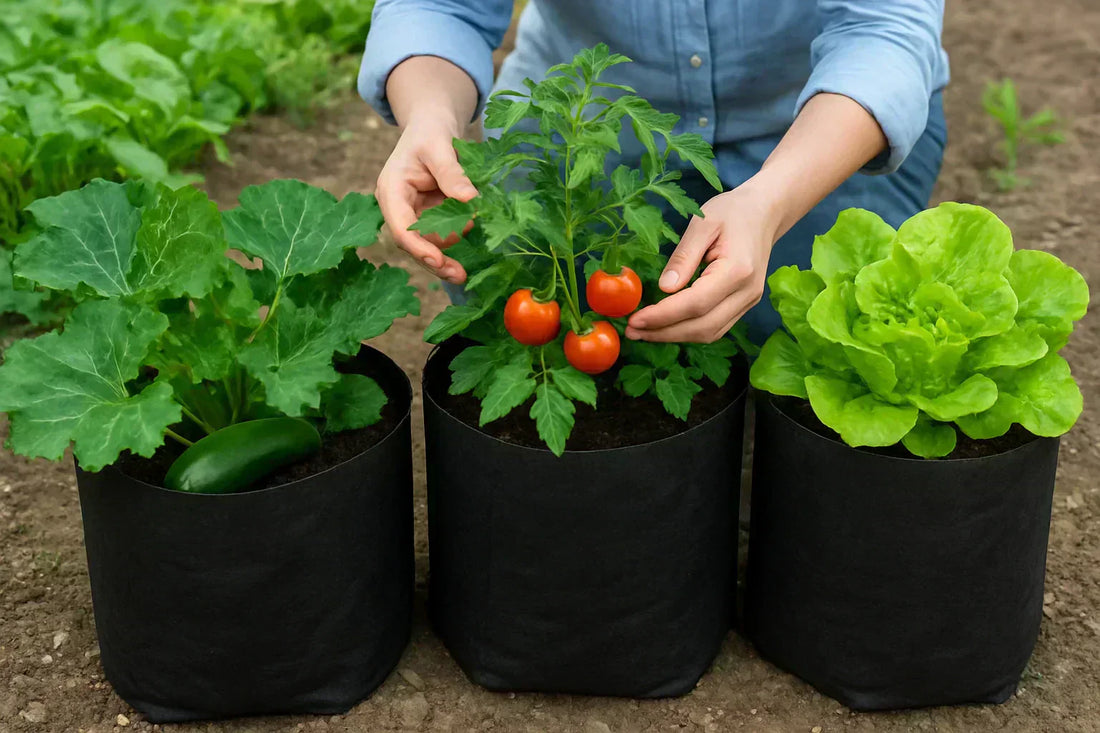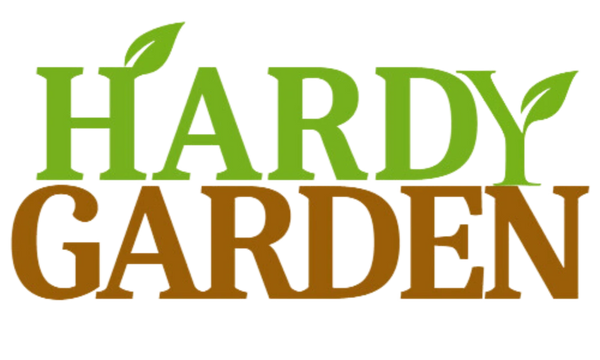
How to Get Bigger Harvests by Growing Vegetables in Grow Bags
Share
Want bigger vegetable harvests without needing a huge garden? Growing vegetables in grow bags is the answer—and it works perfectly in any season. These lightweight bags give plants a healthy home for strong roots and growth no heavy tools or big garden needed. No matter if you garden on a balcony, patio, or small backyard, grow bags make it easy to enjoy fresh produce all year. This guide will show you simple tips to get the most from your grow bag garden in any season.
Why Choose Grow Bags for Vegetables
- Better Root Growth: Grow bags let roots breathe and spread, which makes plants healthier and more productive.
- Easy to Move: You can place them anywhere, patio, balcony, or yard and move them to get more sun or shade.
- Save Space: Perfect for small spaces, grow bags make gardening possible even without a big yard.
- Good Drainage: Extra water drains out easily, so plants don’t sit in soggy soil.
- Better Than Pots or Beds: Unlike heavy pots or big garden beds, grow bags are light, flexible, and give you bigger harvests in less space.

Choosing the Right Grow Bags for Vegetables
Material Choice
Fabric grow bags are the most popular because they let roots breathe, prevent waterlogging, and encourage healthier growth. Plastic bags hold water longer but don’t give the same root aeration. For bigger harvests, fabric is usually the better choice.
Durability Counts
Look for bags with strong stitching and sturdy handles so they last more than one season. UV-resistant fabric will also stand up better to the sun.
Drainage is Key
Good grow bags should drain excess water easily. If water sits in the bag, roots can rot. Always check that your bag has proper drainage before planting.
Size Matters
The size of your grow bag is one of the most important factors for healthy plants and bigger harvests. Too small, and the roots become cramped. Too big, and soil may stay wet for too long. Matching the bag size to the vegetable gives your plants the best chance to thrive.
- Small Bags (1–5 gallons): Best for herbs, leafy greens, radishes, and shallow-root crops.
- Medium Bags (7–10 gallons): Ideal for peppers, carrots, beets, bush tomatoes, and eggplants.
- Large Bags (15–20 gallons): Perfect for vining tomatoes, zucchini, cucumbers, and larger root crops.
- Extra-large bags (25–30 gallons): Great for potatoes, multiple plants together, or heavy feeders that need deep soil and lots of space.

How to Start Growing With Grow Bags
Follow these steps to get your garden going:
- Pick the Right Bag – Choose a size that matches what you want to grow. Herbs and greens do well in small bags, while tomatoes and potatoes need larger ones.
- Prepare the Soil – Use a light, nutrient-rich potting mix. Add compost or organic fertilizer, or organic soil enhancer , to give your plants a strong start. Avoid using heavy garden soil because it can compact and block drainage.
- Plant Your Seeds or Seedlings – Place seeds at the recommended depth, or transplant healthy seedlings into the bag. Don’t overcrowd—leave enough space for roots to spread.
- Water Properly – Grow bags are easy to water, but they drain faster than traditional pots. Check soil moisture daily and water deeply until excess flows out the bottom. Consistent watering keeps roots healthy and plants thriving.
- Find the Right Spot – Place bags where your plants will get enough sunlight. Most vegetables need at least 6–8 hours of sun every day.
- Feed and Care – Add fertilizer or compost to keep the soil rich. Trim or harvest regularly to encourage more growth.
- Rotate or Move Bags – One of the best perks of grow bags is their portability. Shift them to catch more sun, avoid heavy rain, or shield plants from pests. During the cold season, move your plants to warmer, sheltered spots to protect roots and extend your growing time.

Vegetables and Planting Density for Grow Bags
| Crop / Plant | Planting Distance | 20-Gallon (19.7" x 15.8") | 25-Gallon (21.7" x 15.8") | 30-Gallon (24.6" x 15") |
|---|---|---|---|---|
| Leafy Greens (Lettuce, Spinach) | 6–8 inches | 10–12 plants | 14–16 plants | 17–20 plants |
| Kale (Full Size) | 12–18 inches | 3 plants | 3–4 plants | 5 plants |
| Tomatoes | 18–24 inches | 1 plant | 2 plants | 3–4 plants |
| Peppers (Bell, Chili) | 12–18 inches | 1 plant | 2 plants | 3 plants |
| Radishes | 2–3 inches | 90–120 plants | 120–150 plants | 150–180 plants |
| Carrots | 2–3 inches | 25–35 plants | 35–45 plants | 45–55 plants |
| Beets / Turnips | 3–4 inches | 29 plants | 35–40 plants | 40–45 plants |
| Potatoes | 4–6 inches | 4–5 seeds | 6–8 seeds | 8–10 seeds |
| Onions | 3–4 inches | 25 bulbs | 30–40 bulbs | 40–50 bulbs |
| Herbs (Basil, Parsley) | 6–8 inches | 8 plants | 10 plants | 13 plants |
Conclusion:
Growing vegetables in grow bags is a simple, smart way to enjoy fresh harvests right at home, whether you have a balcony, patio, or backyard. With their lightweight, breathable, and portable design, grow bags make gardening easier, more flexible, and more rewarding than ever.
Start your garden today with our premium grow bags crafted for healthy roots, bigger harvests, and effortless growing. Shop now and bring your garden dreams to life!
